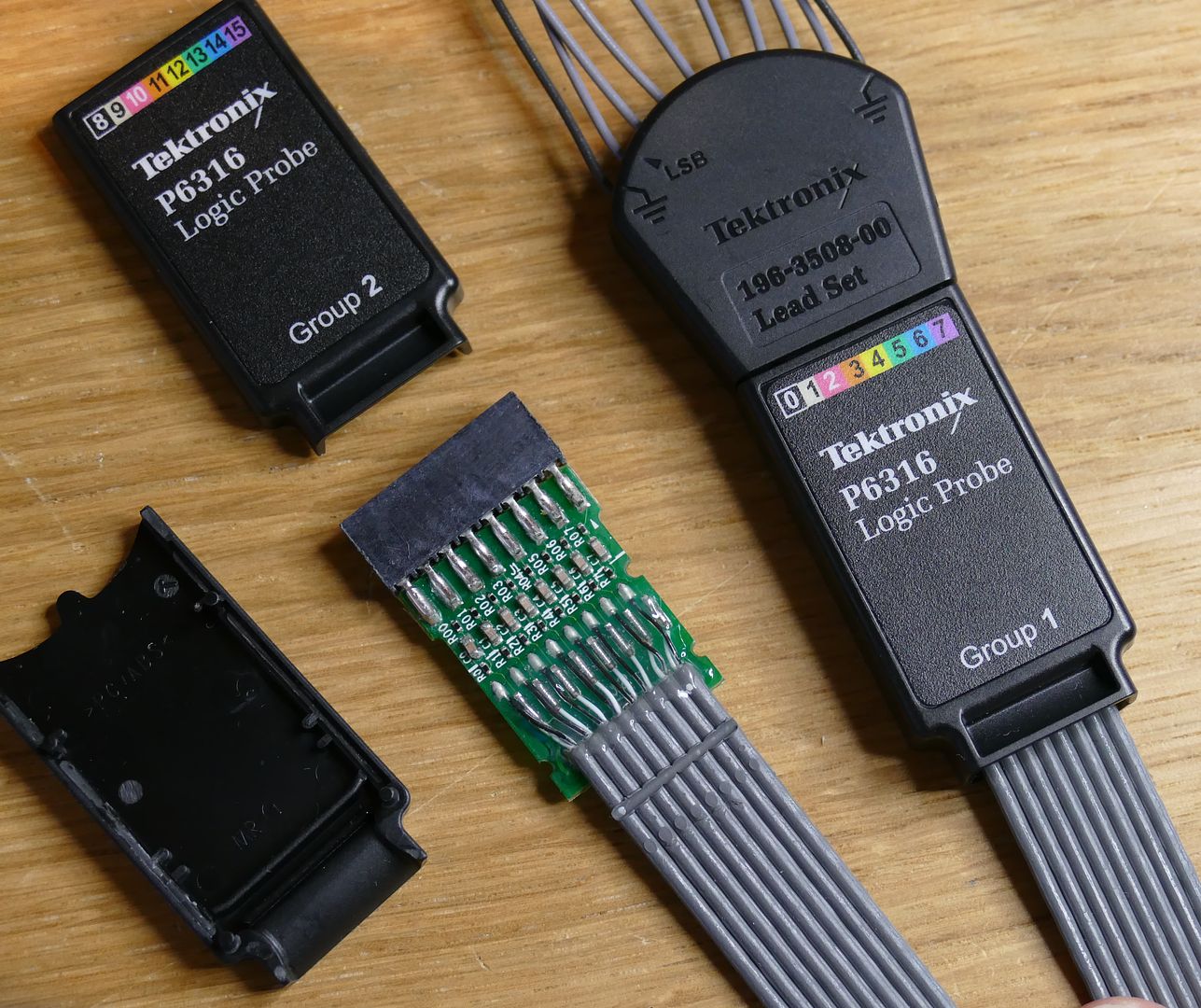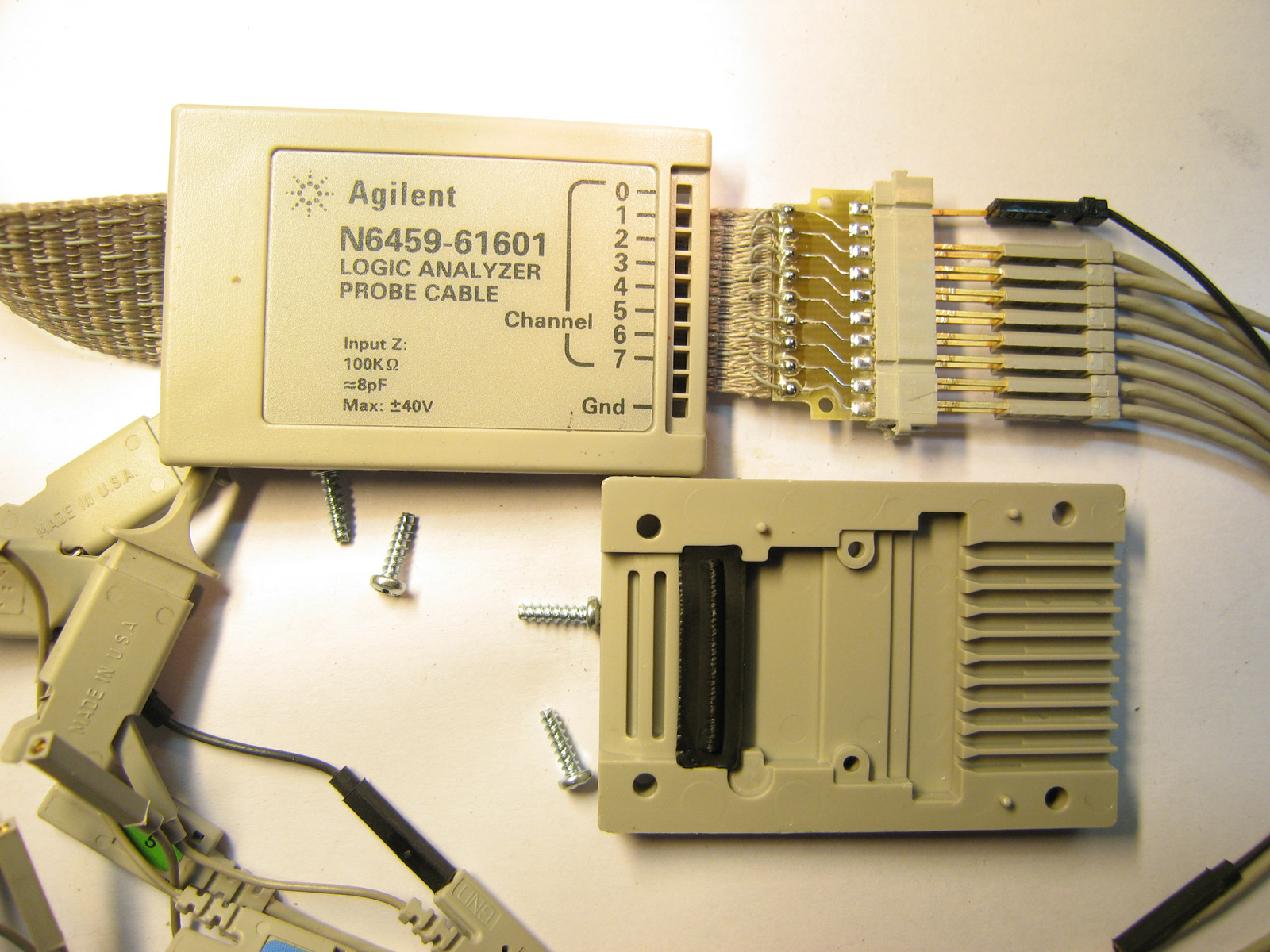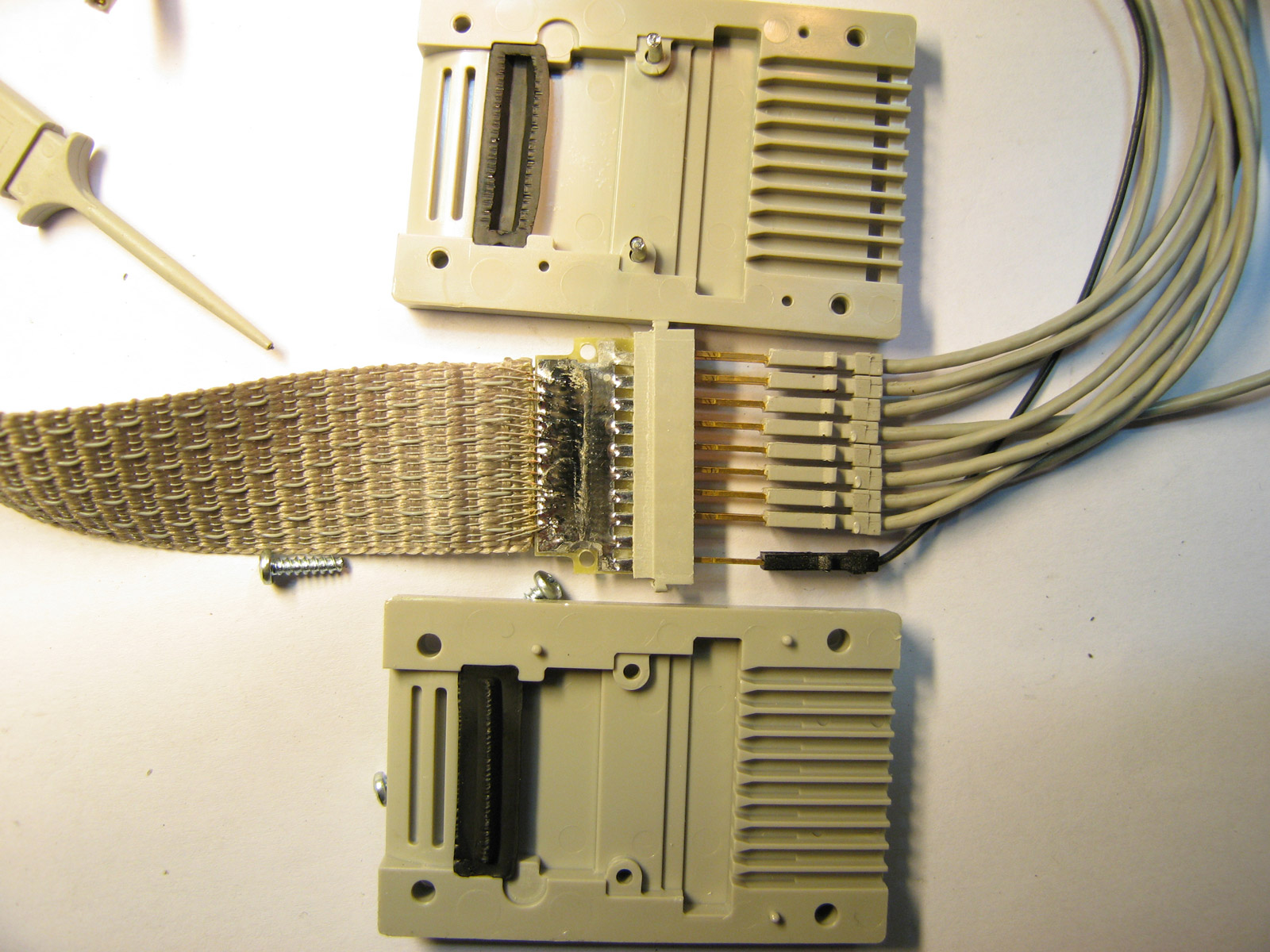I was trying to avoid going into a long description with lots of photos and links, but I can see I may well have to!
I was trying to draw a comparison between the two methods, that of a passive based LA probe assembly and that of an active one.
The Rigol MSO1000Z LA probe has a bunch of LMH7322 comparators in the pod, and all cables and probes are normal conductors.

The Tek P6316 probe is passive and I did a teardown of it here
https://www.eevblog.com/forum/testgear/mdo3000-hacking/msg765377/#msg765377 which shows the pods have passive circuits as well as distributed resistance in both the main ribbon cable and each individual probe lead.

The HP/Agilent/Keysight probe (54620-61601 but also has other numbers for electrically equivalent items) I took apart is the one that's been commonly used in their lower end MSOs for about 15 years, as well as some of their dedicated LAs. As well as what I've mentioned, I agree there's a lumped resistive/capacitive netwrok in each individual probes' "nano pod". This nano pod thingy sits about 1.5" from the probe point, and that 1.5" may well just be a bit of wire. The nano probe thing also has an optional ground connection as well as the lump network, and proceeds as coax for the next few inches to the pod proper. I would not be surprised if this has distributed resistance, but without destroying it I can't tell for sure. The mini grabbers are nothing more than that, the probe tips plug directly onto header pins and the like, or you can connect with the mini grabbers if desperate, frankly I usually find mini grabbers too flimsy and unreliable, they drop off too easily.
Anyway, here's a teardown of the main pod:
https://www.eevblog.com/forum/testgear/dsox2000-and-3000-series-licence-have-anyone-tried-to-hack-that-scope/msg367778/#msg367778

"nano pods":

Anyway, the point of my note is that these LA cables are not just reassuring expensive ribbon cables!
Edit:typos, and added some pics.